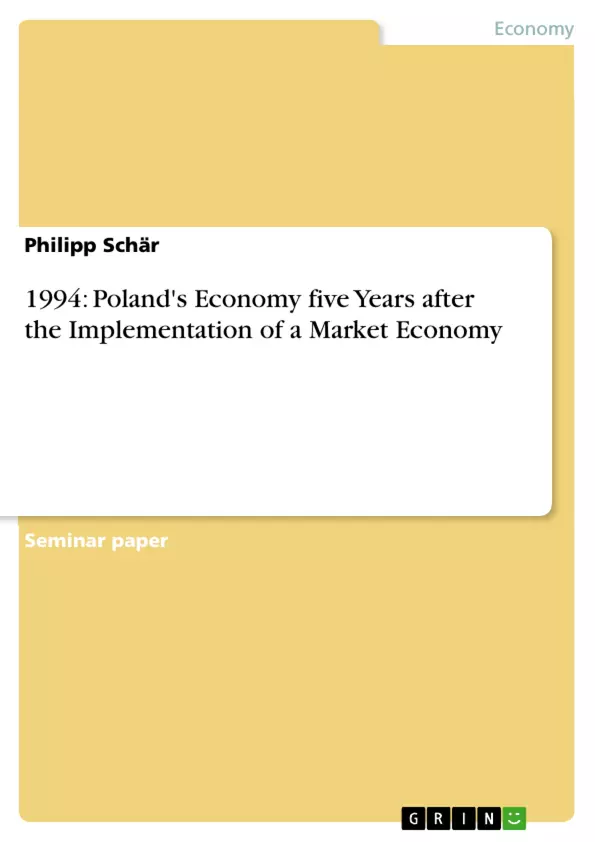If one concerns oneself in Poland’s economic changes after escaping from the influence of the Soviet Empire in the Year 1989, especially one assumption made by several experts at this time seems to be rather naïve to us in today’s perspective: It is the assumption that the economic level of Poland and other countries of Central and Eastern Europe would catch up with the one of other countries, such as France or even Germany within only a few years, if the changes and reforms are made in the way they should. Some experts assumed that this duration is as low as three years. 1 Today we know that it is not so easy to catch up for several reasons, although some of those countries have had a amazing development and still have an economic growth that is far above the one of the so-called “Old European countries”, the EU-15. What I want to research at this point is how the situation after the short time given by the expert’s forecasts really was. I therefore take the situation in 1994, which makes, if compared to the first assumptions, a rather “tolerant” period of five years from 1989.
Inhaltsverzeichnis (Table of Contents)
- Introduction
- Economic development in Poland since 1989
- Investments in Poland
- Social Situation in Poland
- Outlook
Zielsetzung und Themenschwerpunkte (Objectives and Key Themes)
This text aims to examine the state of Poland's economy in 1994, five years after the implementation of a market economy. It analyzes the economic development, investment trends, and social conditions in the context of Poland's transition from a centrally planned system to a market-oriented one.
- Poland's economic transition after 1989
- The challenges and successes of economic reform
- Foreign investment and its impact on Poland's economy
- The social consequences of market liberalization
- Poland's economic performance in comparison to other Central and Eastern European countries
Zusammenfassung der Kapitel (Chapter Summaries)
- Introduction: The introduction sets the stage by discussing the expectations and assumptions surrounding Poland's economic transition in the early 1990s. It highlights the initial belief that Poland would quickly catch up to Western European economies and examines the realities of this expectation.
- Economic development in Poland since 1989: This chapter explores the economic development of Poland following the fall of communism. It discusses the challenges faced, including high foreign debt, hyperinflation, and a reliance on heavy industry. The chapter also highlights the positive economic growth achieved in the early 1990s, particularly after 1992, and the role of private sector development in this growth.
- Investments in Poland: This chapter focuses on the attraction of foreign investment to Poland after the implementation of the Joint-Venture law in 1991. It analyzes the growth of joint ventures and the key sectors attracting foreign investment. The chapter also discusses the factors driving investment, particularly Poland's low wages and the potential for labor-intensive industries.
- Social Situation in Poland: This chapter examines the social consequences of Poland's economic transition. It discusses the challenges of acclimatizing to a market economy, particularly in the areas of labor markets, wages, and social welfare. The chapter also analyzes the growth of unemployment, the impact on income levels, and the role of government policy.
Schlüsselwörter (Keywords)
The key words and focus topics of this text include Poland's economic transition, market liberalization, foreign investment, social consequences, unemployment, and wage levels. It explores the challenges and successes of Poland's economic development in the 1990s, particularly in relation to the globalized economy.
- Quote paper
- Philipp Schär (Author), 2006, 1994: Poland's Economy five Years after the Implementation of a Market Economy, Munich, GRIN Verlag, https://www.grin.com/document/67809



